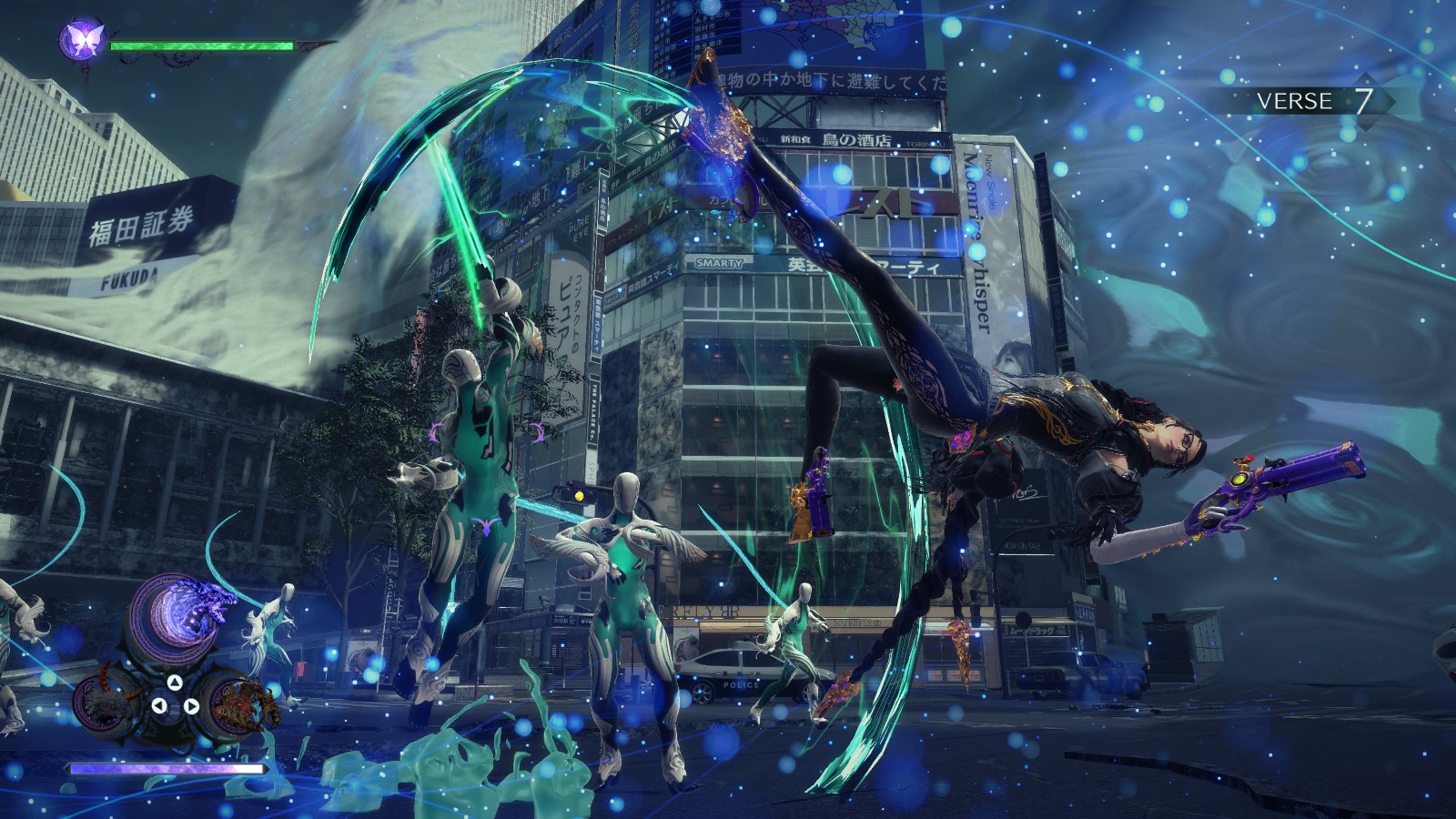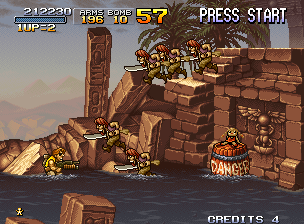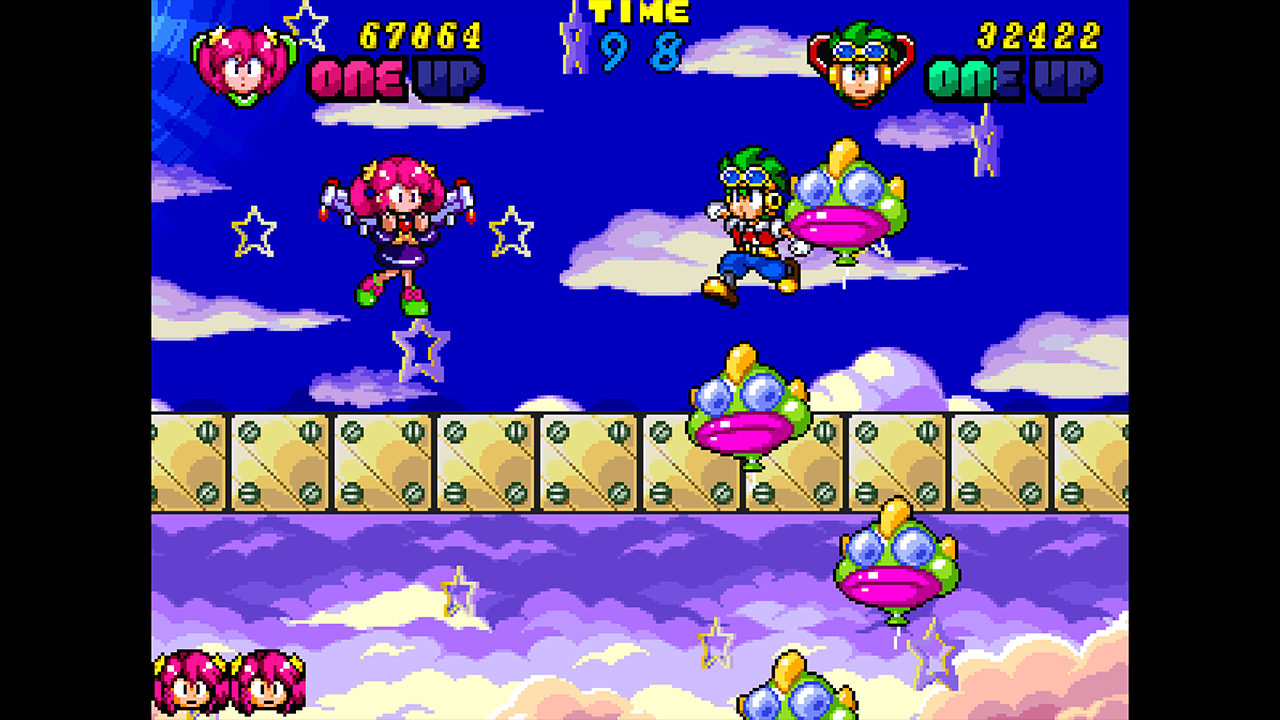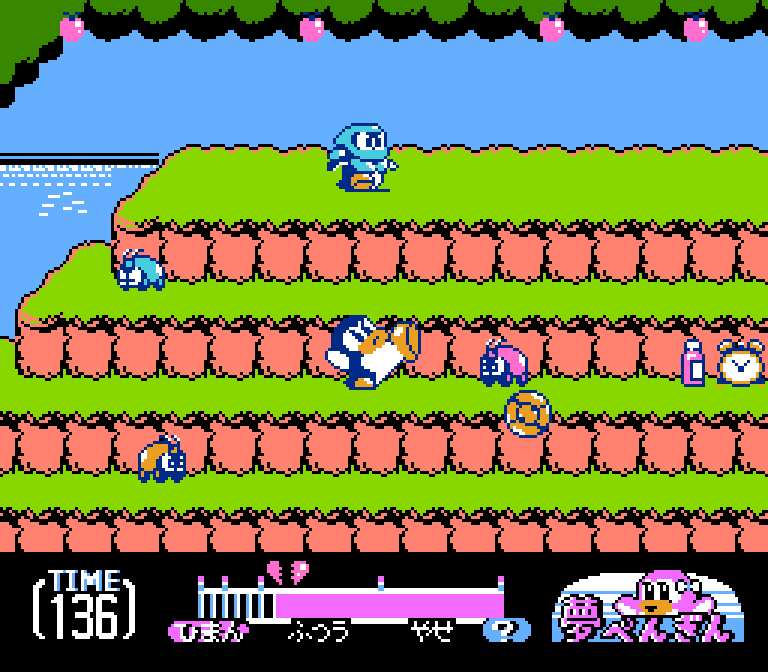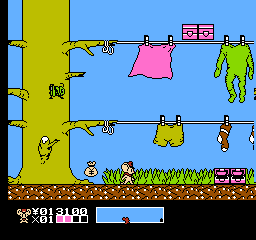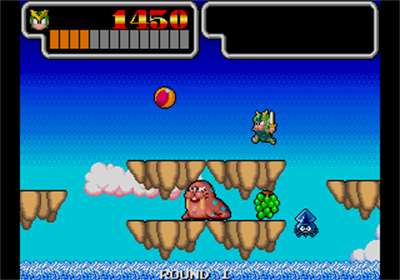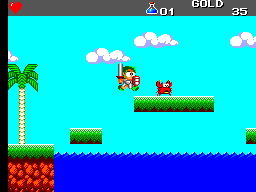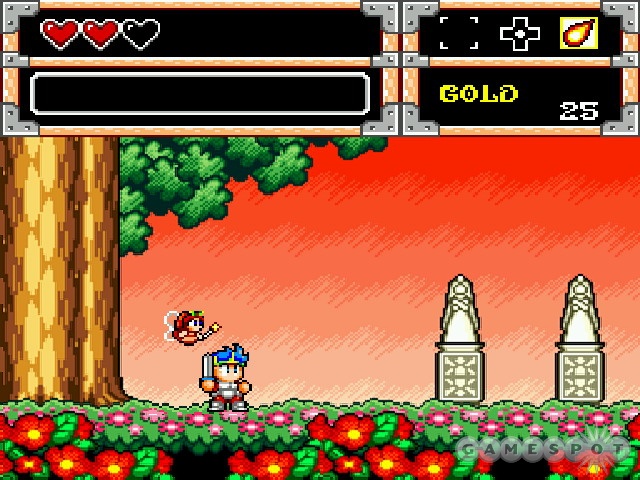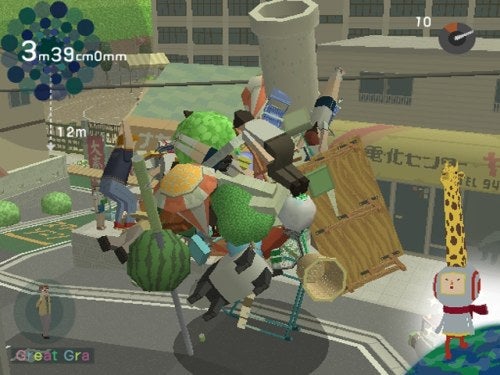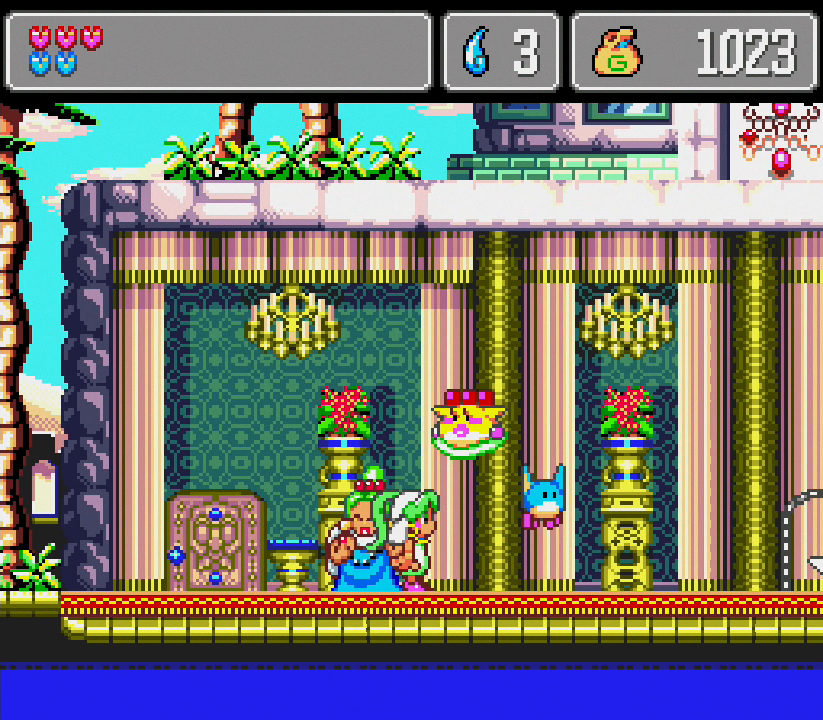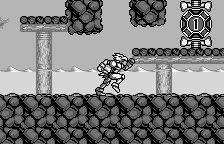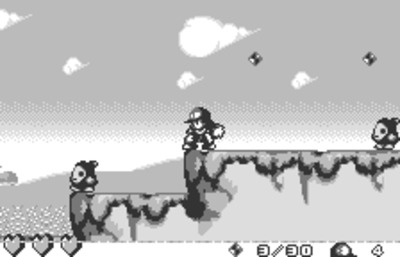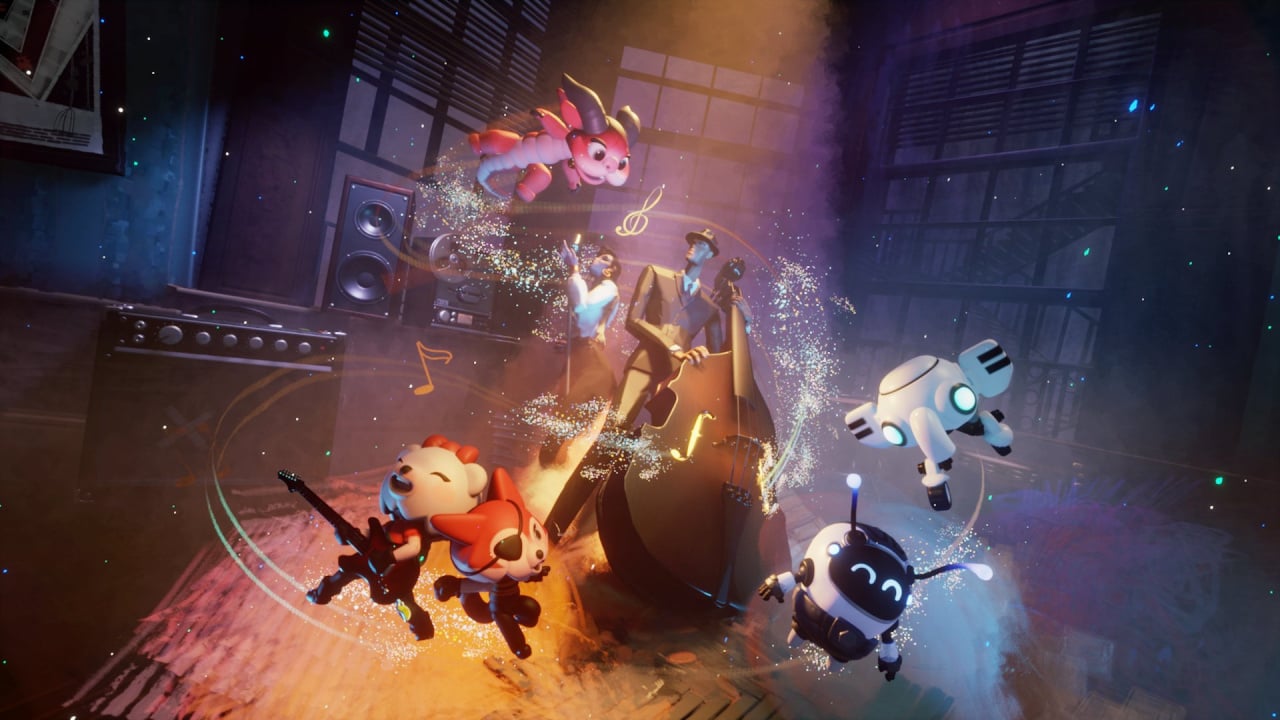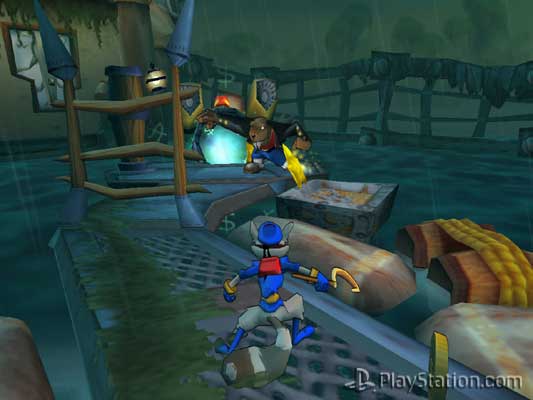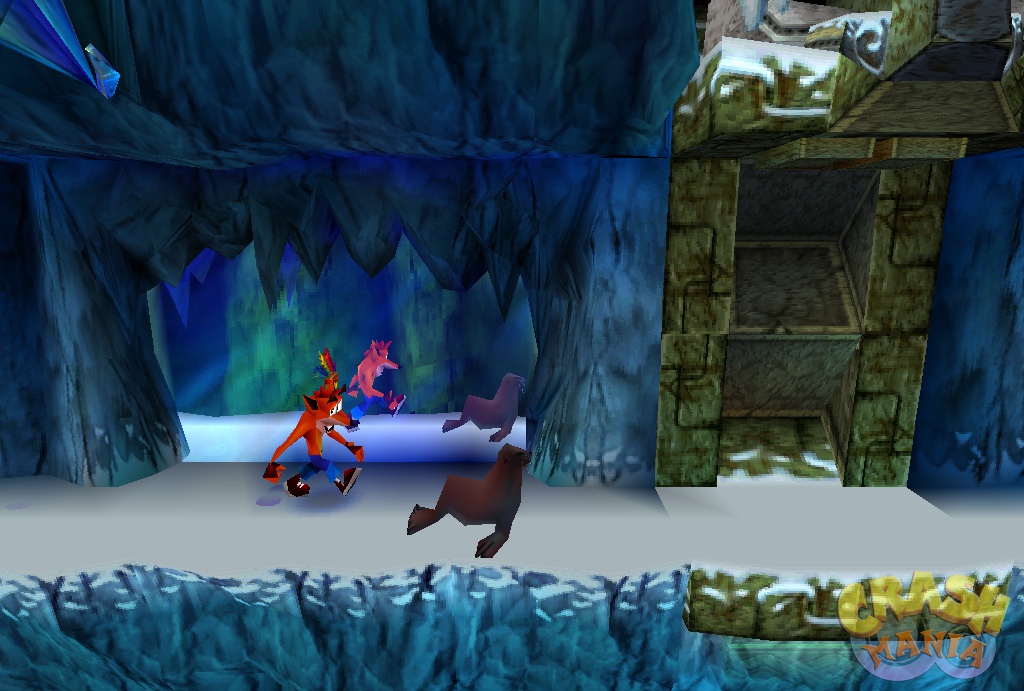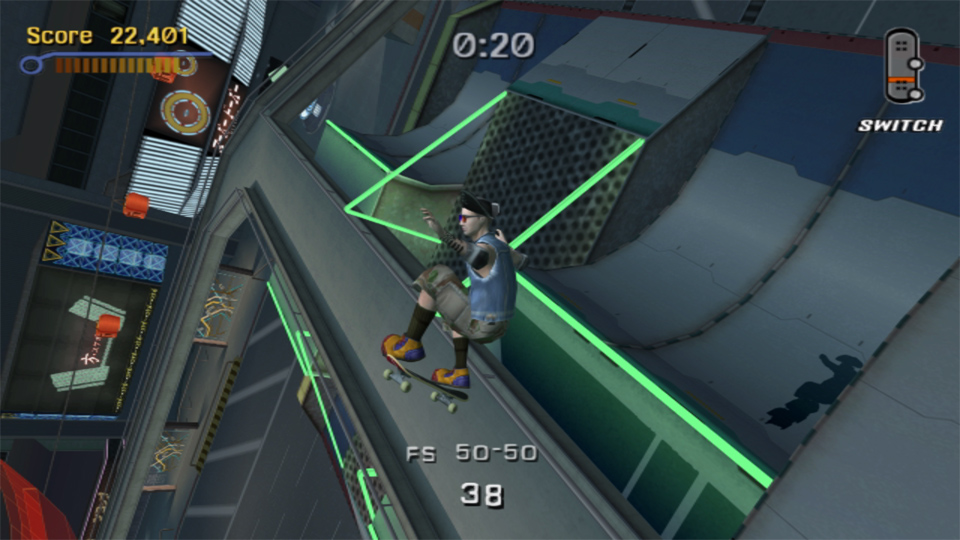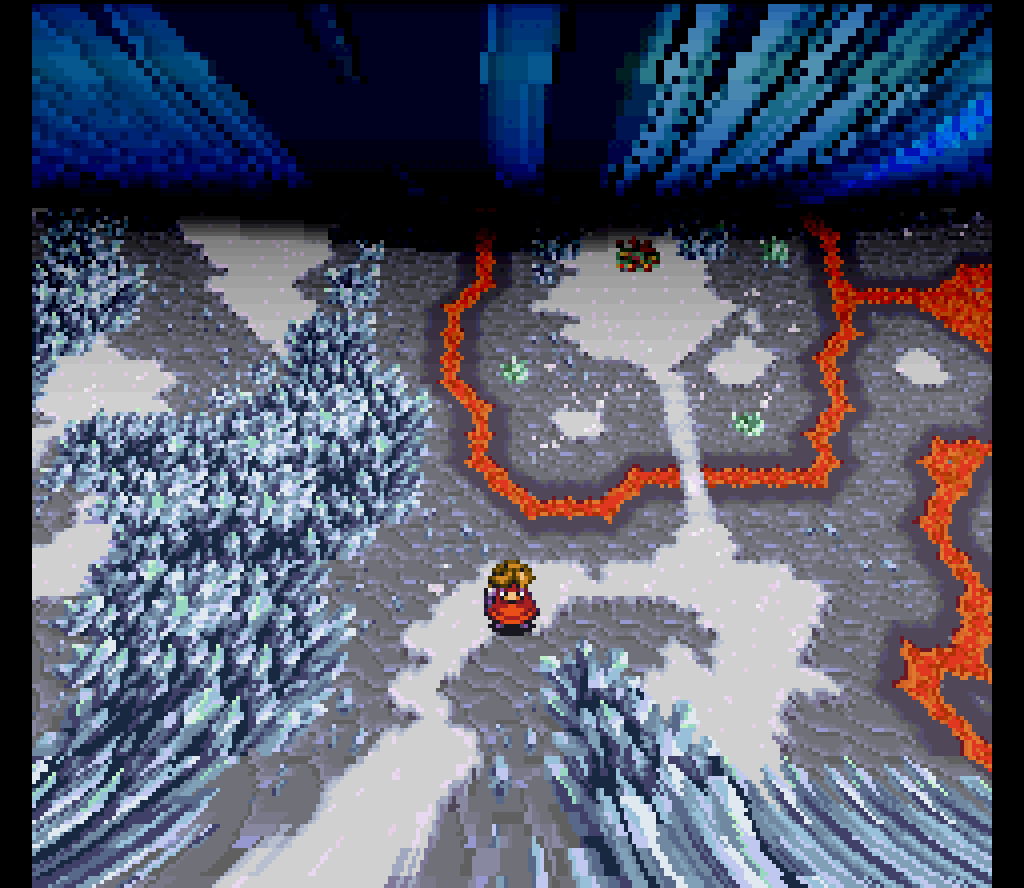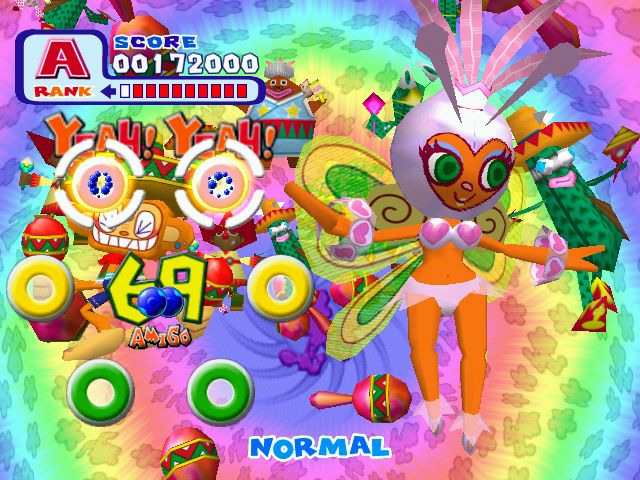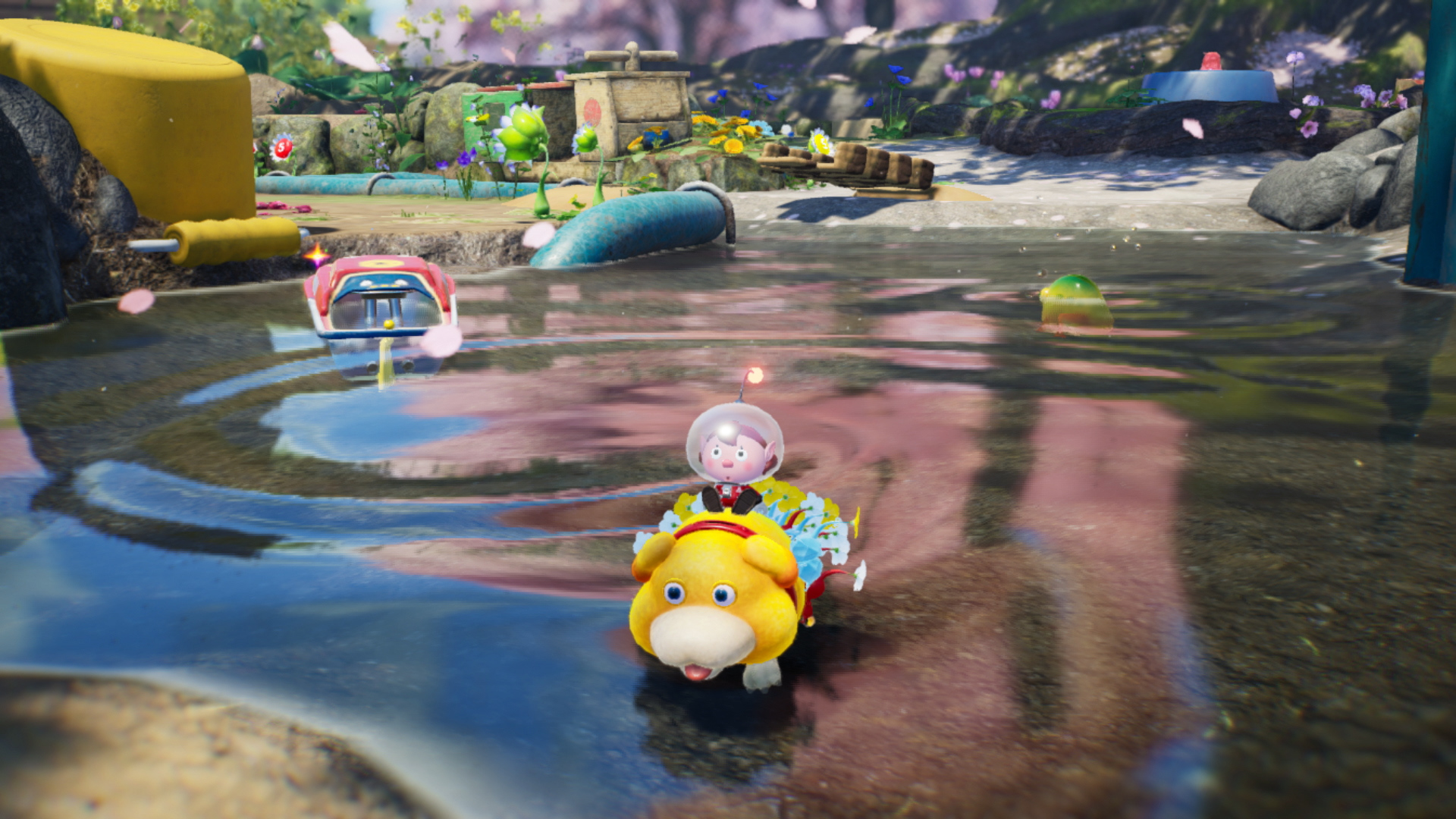Games Beaten 2023
- PartridgeSenpai
- Next-Gen
- Posts: 3076
- Joined: Mon Dec 14, 2015 9:27 am
- Location: Northern Japan
Re: Games Beaten 2023
Partridge Senpai's 2023 Beaten Games:
Previously: 2016 2017 2018 2019 2020 2021 2022
* indicates a repeat
1. Super Hero Operations (PS1)
2. Lil' Gator Game (PC)
3. Disco Elysium: The Final Cut (PC)
4. Dragon Quest VII (PS1)
5. Dragon Quest III (SFC)
6. Dragon Quest VIII (PS2)
7. Dragon Quest Monsters (GBC)
8. Mario Party 6 (GC)
9. Last Bible 3 (SFC)
10. Mario Party 4 (GC)
11. Kirby and the Forgotten Land (Switch)
12. Final Fantasy: Mystic Quest (SFC)
13. Chrono Trigger (SFC) *
14. BoxBoy + BoxGirl! (Switch)
15. The Murder of Sonic The Hedgehog (PC)
16. SaGa (GB)
17. Wario Land 3 (GBC) *
18. Sutte Hakkun (SFC)
19. Kane & Lynch 2 (PC)
20. Burger Time Deluxe (GB)
21. Super Mario Advance 4: World e+ (GBA)
22. Bomberman GB 2 (GB)
23. Mario Party 5 (GC)
24. Klonoa: door to phantomile (PS1)
25. Mario Party 7 (GC)
26. Mario Party (N64) *
27. Crash Bash (PS1)
28. Balan Wonderworld (PS4)
29. From TV Animation One Piece Tobidase Kaizokudan! (PS1)
30. One Piece Pirate Warriors 3 (Vita)
31. Atelier Iris: Grand Phantasm (PS2)
32. Mana Khemia: Alchemists of Al-Revis (PS2)
33. Mana Khemia 2: Fall of Alchemy (PS2)
34. Crusader of Centy (Genesis)
35. Shadow Hearts (PS2)
36. White Album (PS3)
37. Shadow Hearts 2 (PS2)
38. Shadow Hearts: From the New World (PS2)
39. The Hunt for the Red October (GB)
40. Wild Arms (PS1)
41. Wild Arms 2 (PS1)
42. Custom Robo V2 (N64)
This is a game I bought aaages ago after I beat the first game, but just never got around to finishing. I had a ton of fun playing the first game on Twitch a couple years back, but I got about halfway through this one on stream before I put it down and just never picked it back up. This game doesn’t record playtime, but I reckon that it took me at least a total 15 hours to play through the normal story mode until I hit credits and then play through nearly all of the post-game stuff. I also played the Japanese version of the game on real hardware.
V2 is a direct sequel to the original Custom Robo that takes place about a year after the events of the first game. Though it takes place in a new town with a new non-verbal player avatar at the helm, the formula is still very similar (and we even have some returning characters from the first game who get new and expanded roles here). You’re going out and starting to play Custom Robo in the new town you just moved to with the help of your new friends, and you get wrapped up in some shady plots by evil figures along the way. It’s still very much of the style of “anime based around a toy” of the time, where everyone just accepts the fact that their world is totally based around these toys and plays it completely straight, which is very fun, so that’s not a problem.
Overall, I’d say this game’s campaign mode is easily weaker than the first. It gets into the Mysterious Evil Plot stuff a lot faster, and while it does a better job establishing that overall mystery, it does a far worse job setting up the characters within it (despite the far larger amount of dialogue this game has overall compared to the first game). The conclusion to the story comes VERY fast, and the overall pacing is just really all over the place. It’s certainly neat that this story is *trying* to be something greater and grander than the first, and the way that it shakes up the pacing of the first by getting to the evil organization stuff so much quicker *does* show that they’re genuinely trying here. However, it really just isn’t enough at the end of the day, and while the story here isn’t a burden or bad, it doesn’t surpass the first game’s story for me.
Mechanically however, that’s another story. To put it simply, V2 is a very accurate way to describe this game, because it really *is* just the first game with more content. It’s still a one-on-one arena fighter where you fight to reduce the other robo’s health to zero first, but just with more stuff. In addition to finally being able to swap bodies/frames in story mode (whereas in the first game you HAD to use your normal all-arounder Ray body the whole time) so you have a *lot* more builds actually viable, they’ve also added two new body types as well. This comes along with the new blink system (where old frames only had the ability to do extra jumps or dashes in the air, the two new frames can blink around the map instead), as well as a smattering of fun, new weapons and even a ton of new arenas to fight in as well. The fact that you can still so easily test builds after you customize them makes engaging with these new weapons and experimenting with new builds all the easier too, and that feature is just as appreciated here as it was in the first game.
This ultimately does make for a much easier experience in the story mode as a result (which extends into the post-game which is just a massive series of tournaments with a bit of little story attached to each), but I feel like that comes more from the fact you just have so many more tools available to you rather than a “dumbing down” of the mechanics or difficulty or whatever. The post-game is also neat in that it’s not only where you unlock a large amount of the weapons and almost all of the frame variants, but it also really pushes you to learn new builds and not stick with what’s comfortable, which is a neat feature to make it good fun worth playing beyond *just* being new robo fights. While it may not replace the first game narratively, Custom Robo V2 lives up to its title and is absolutely just a flat upgrade on the first game mechanically.
Aesthetically, the game is basically just a continuation of the first game (which makes sense, as it reuses the same engine). We have very nice 3D battle arenas and well modeled and designed robos among them, and the game almost never has any slowdown as well, though that is indeed *almost* as some of the more texture-heavy battle arenas do get a bit of slowdown unfortunately. The game world is still 2D character sprites in 3D areas, and the character portraits and models are all very fun and cute with great Nintendo-y music on top of it all. As shouldn’t be surprising from a Nintendo-published N64 game, it aesthetically really knocks it out of the park and uses the hardware just about as well as it possibly could.
Verdict: Recommended. If you’re a fan of the first game (or even the GameCube game), this is a game well worth checking out. It’s not the most terribly import-friendly title, unfortunately, as it’d make customizing your robot quite difficult, so that’s one thing to keep in mind. However, on its own merits and ignoring the language barrier, Custom Robo V2 absolutely succeeds at being an unconventional fighting game that is a very worthy successor to its predecessor. If you like robot stuff and/or 3D arena fighters, this is absolutely one worth checking out~.
----
43. Mischief Makers (N64)
This is another N64 game I bought a fair while ago but just never got around to playing. It’s one I could never beat growing up, and it’s also one of the favorite games of a close friend of mine, so I thought it’d be a load of fun to show them the Japanese version of a game they know really well in English. Having the N64 hooked up again seemed like as great a time as any to finally play through this, so I did! It took me about 6.5 hour to play through the Japanese version of the game on real hardware, and I got 27 of 52 yellow crystals doing it (to see as much of the ending as you’d normally want to).
Mischief Makers (or as the Japanese title calls it, Trouble Makers) is a very oddball story about Marina, a powerful, happy, ditzy maid robot for Professor Cambell. However, on their visit to Planet Nendoro, the professor just can’t seem to stop getting kidnapped, and it’s up to Marina to save him again and again xD. The game is very silly with tons of horrible disaster weirdos everywhere (on both the heroes and villains sides), so the dialogue is always a joy to read. It’s not trying to do anything particularly daring with its narrative, but it’s written in a very fun way and also does have some genuinely sweet moments here and there. It does a more than serviceable job of setting up the action at hand, and it augments it significantly with just how much more fun and memorable it makes the adventure you’re playing through~.
The adventure in question is very much what you’d expect of a Treasure game. Almost playing like a spiritual successor to Gunstar Heroes, Mischief Makers is a 2.5D (but mostly 2D) side scrolling action game, but instead of guns like Gunstar Heroes has, you have a very expanded throwing ability. Marina can pick up, shake, and throw (or at least deflect) damn near anything enemies can throw at her. She can also dash in any cardinal direction by double-tapping the D-pad or pressing one of the corresponding C-buttons (though the C-buttons are a little bit slower than using the D-pad). All of that certainly has a not insignificant learning curve attached to it (especially when it comes to platforming), it still makes for a very satisfying and fun experience. Particularly great and Treasure-ful are the boss fights, some of which are (unsurprisingly) balanced a bit too hard, I’d argue, especially with bosses closer to the start of the game actually being a fair bit harder than most bosses in the back half of the game, but they still make for intense and enjoyable fights regardless that have some wicked cool set pieces and just feel awesome to play through. There are some problems here and there with level design in that some levels have puzzles that are just very needlessly plodding or mean, and some bosses just aren’t quite clear enough on how they’re actually fought, but those aren’t issues nearly big enough to dampen the overall experience.
There are also the yellow crystals I mentioned earlier. Crystals (other than red ones) are generally your health pick ups. Red crystals, on the other hand, are more like money, as they can buy hints from certain NPCs as well as revive you when you die. Pay more red crystals and you come back with more health bars (or just quit the game from the game over screen and it’ll bump you back to before you even started that level, meaning you never actually lose any money at all from up until that point scrapped attempts, which is a very odd development oversight). Yellow crystals, on the other hand, aren’t just huge health pick ups, they’re also special. There is one in every stage, and they can be hidden anywhere from at the end of a difficult platforming challenge or locked behind defeating a boss without taking a single hit, but collecting them is what gets you the game’s ending. Every one you grab will unlock a few more seconds of the game’s ending, with about 24 or 26 of them being needed to see the “normal” ending, and anything after that unlocking extra gags or silly moments after that. While the overall game is probably one of the easier 2D platformers Treasure has put out over the years, getting all of those crystals is absolutely what makes this game Treasure-levels of hard, and it really isn’t for the faint of heart. Thankfully, getting 20 or so is a relatively manageable thing (especially with a guide pointing you towards their hiding places), so seeing the normal amount of narrative conclusion is far from an insurmountable task.
Aesthetically, this game is absolutely gorgeous. Unsurprisingly for a Treasure game, the levels and particularly characters are absolutely oozing with style, and it’s hard not to love them. While both the English and Japanese versions both have character portraits and dialogue in addition to little bits of voice work here and there, something only the Japanese version has is little mid-battle speech bubbles that will appear from enemies, particularly bosses. It gives the overall game just that much more vibe of a gag manga, and it adds a ton of fun character silliness to an already delightfully put together experience that had me laughing a ton. The music is also absolutely excellent, which talking about a Treasure game from the 90’s should also come as no surprise.
Verdict: Highly Recommended. While there are a few bosses that are a bit tougher than they should probably be and a couple levels that just kinda suck, this is regardless an all-time classic on the N64. Though a relatively early game on the system (and one that uses the D-pad rather than the joy stick), it still succeeds at being an excellent 2D action game well worth playing. If you’re a fan of 2D action platformers, and especially if you’re a fan of Treasure’s other work, this is yet another Treasure master-work that is well worth your time despite the generally 3D-focused console it happens to find itself on.
Previously: 2016 2017 2018 2019 2020 2021 2022
* indicates a repeat
1. Super Hero Operations (PS1)
2. Lil' Gator Game (PC)
3. Disco Elysium: The Final Cut (PC)
4. Dragon Quest VII (PS1)
5. Dragon Quest III (SFC)
6. Dragon Quest VIII (PS2)
7. Dragon Quest Monsters (GBC)
8. Mario Party 6 (GC)
9. Last Bible 3 (SFC)
10. Mario Party 4 (GC)
11. Kirby and the Forgotten Land (Switch)
12. Final Fantasy: Mystic Quest (SFC)
13. Chrono Trigger (SFC) *
14. BoxBoy + BoxGirl! (Switch)
15. The Murder of Sonic The Hedgehog (PC)
16. SaGa (GB)
17. Wario Land 3 (GBC) *
18. Sutte Hakkun (SFC)
19. Kane & Lynch 2 (PC)
20. Burger Time Deluxe (GB)
21. Super Mario Advance 4: World e+ (GBA)
22. Bomberman GB 2 (GB)
23. Mario Party 5 (GC)
24. Klonoa: door to phantomile (PS1)
25. Mario Party 7 (GC)
26. Mario Party (N64) *
27. Crash Bash (PS1)
28. Balan Wonderworld (PS4)
29. From TV Animation One Piece Tobidase Kaizokudan! (PS1)
30. One Piece Pirate Warriors 3 (Vita)
31. Atelier Iris: Grand Phantasm (PS2)
32. Mana Khemia: Alchemists of Al-Revis (PS2)
33. Mana Khemia 2: Fall of Alchemy (PS2)
34. Crusader of Centy (Genesis)
35. Shadow Hearts (PS2)
36. White Album (PS3)
37. Shadow Hearts 2 (PS2)
38. Shadow Hearts: From the New World (PS2)
39. The Hunt for the Red October (GB)
40. Wild Arms (PS1)
41. Wild Arms 2 (PS1)
42. Custom Robo V2 (N64)
This is a game I bought aaages ago after I beat the first game, but just never got around to finishing. I had a ton of fun playing the first game on Twitch a couple years back, but I got about halfway through this one on stream before I put it down and just never picked it back up. This game doesn’t record playtime, but I reckon that it took me at least a total 15 hours to play through the normal story mode until I hit credits and then play through nearly all of the post-game stuff. I also played the Japanese version of the game on real hardware.
V2 is a direct sequel to the original Custom Robo that takes place about a year after the events of the first game. Though it takes place in a new town with a new non-verbal player avatar at the helm, the formula is still very similar (and we even have some returning characters from the first game who get new and expanded roles here). You’re going out and starting to play Custom Robo in the new town you just moved to with the help of your new friends, and you get wrapped up in some shady plots by evil figures along the way. It’s still very much of the style of “anime based around a toy” of the time, where everyone just accepts the fact that their world is totally based around these toys and plays it completely straight, which is very fun, so that’s not a problem.
Overall, I’d say this game’s campaign mode is easily weaker than the first. It gets into the Mysterious Evil Plot stuff a lot faster, and while it does a better job establishing that overall mystery, it does a far worse job setting up the characters within it (despite the far larger amount of dialogue this game has overall compared to the first game). The conclusion to the story comes VERY fast, and the overall pacing is just really all over the place. It’s certainly neat that this story is *trying* to be something greater and grander than the first, and the way that it shakes up the pacing of the first by getting to the evil organization stuff so much quicker *does* show that they’re genuinely trying here. However, it really just isn’t enough at the end of the day, and while the story here isn’t a burden or bad, it doesn’t surpass the first game’s story for me.
Mechanically however, that’s another story. To put it simply, V2 is a very accurate way to describe this game, because it really *is* just the first game with more content. It’s still a one-on-one arena fighter where you fight to reduce the other robo’s health to zero first, but just with more stuff. In addition to finally being able to swap bodies/frames in story mode (whereas in the first game you HAD to use your normal all-arounder Ray body the whole time) so you have a *lot* more builds actually viable, they’ve also added two new body types as well. This comes along with the new blink system (where old frames only had the ability to do extra jumps or dashes in the air, the two new frames can blink around the map instead), as well as a smattering of fun, new weapons and even a ton of new arenas to fight in as well. The fact that you can still so easily test builds after you customize them makes engaging with these new weapons and experimenting with new builds all the easier too, and that feature is just as appreciated here as it was in the first game.
This ultimately does make for a much easier experience in the story mode as a result (which extends into the post-game which is just a massive series of tournaments with a bit of little story attached to each), but I feel like that comes more from the fact you just have so many more tools available to you rather than a “dumbing down” of the mechanics or difficulty or whatever. The post-game is also neat in that it’s not only where you unlock a large amount of the weapons and almost all of the frame variants, but it also really pushes you to learn new builds and not stick with what’s comfortable, which is a neat feature to make it good fun worth playing beyond *just* being new robo fights. While it may not replace the first game narratively, Custom Robo V2 lives up to its title and is absolutely just a flat upgrade on the first game mechanically.
Aesthetically, the game is basically just a continuation of the first game (which makes sense, as it reuses the same engine). We have very nice 3D battle arenas and well modeled and designed robos among them, and the game almost never has any slowdown as well, though that is indeed *almost* as some of the more texture-heavy battle arenas do get a bit of slowdown unfortunately. The game world is still 2D character sprites in 3D areas, and the character portraits and models are all very fun and cute with great Nintendo-y music on top of it all. As shouldn’t be surprising from a Nintendo-published N64 game, it aesthetically really knocks it out of the park and uses the hardware just about as well as it possibly could.
Verdict: Recommended. If you’re a fan of the first game (or even the GameCube game), this is a game well worth checking out. It’s not the most terribly import-friendly title, unfortunately, as it’d make customizing your robot quite difficult, so that’s one thing to keep in mind. However, on its own merits and ignoring the language barrier, Custom Robo V2 absolutely succeeds at being an unconventional fighting game that is a very worthy successor to its predecessor. If you like robot stuff and/or 3D arena fighters, this is absolutely one worth checking out~.
----
43. Mischief Makers (N64)
This is another N64 game I bought a fair while ago but just never got around to playing. It’s one I could never beat growing up, and it’s also one of the favorite games of a close friend of mine, so I thought it’d be a load of fun to show them the Japanese version of a game they know really well in English. Having the N64 hooked up again seemed like as great a time as any to finally play through this, so I did! It took me about 6.5 hour to play through the Japanese version of the game on real hardware, and I got 27 of 52 yellow crystals doing it (to see as much of the ending as you’d normally want to).
Mischief Makers (or as the Japanese title calls it, Trouble Makers) is a very oddball story about Marina, a powerful, happy, ditzy maid robot for Professor Cambell. However, on their visit to Planet Nendoro, the professor just can’t seem to stop getting kidnapped, and it’s up to Marina to save him again and again xD. The game is very silly with tons of horrible disaster weirdos everywhere (on both the heroes and villains sides), so the dialogue is always a joy to read. It’s not trying to do anything particularly daring with its narrative, but it’s written in a very fun way and also does have some genuinely sweet moments here and there. It does a more than serviceable job of setting up the action at hand, and it augments it significantly with just how much more fun and memorable it makes the adventure you’re playing through~.
The adventure in question is very much what you’d expect of a Treasure game. Almost playing like a spiritual successor to Gunstar Heroes, Mischief Makers is a 2.5D (but mostly 2D) side scrolling action game, but instead of guns like Gunstar Heroes has, you have a very expanded throwing ability. Marina can pick up, shake, and throw (or at least deflect) damn near anything enemies can throw at her. She can also dash in any cardinal direction by double-tapping the D-pad or pressing one of the corresponding C-buttons (though the C-buttons are a little bit slower than using the D-pad). All of that certainly has a not insignificant learning curve attached to it (especially when it comes to platforming), it still makes for a very satisfying and fun experience. Particularly great and Treasure-ful are the boss fights, some of which are (unsurprisingly) balanced a bit too hard, I’d argue, especially with bosses closer to the start of the game actually being a fair bit harder than most bosses in the back half of the game, but they still make for intense and enjoyable fights regardless that have some wicked cool set pieces and just feel awesome to play through. There are some problems here and there with level design in that some levels have puzzles that are just very needlessly plodding or mean, and some bosses just aren’t quite clear enough on how they’re actually fought, but those aren’t issues nearly big enough to dampen the overall experience.
There are also the yellow crystals I mentioned earlier. Crystals (other than red ones) are generally your health pick ups. Red crystals, on the other hand, are more like money, as they can buy hints from certain NPCs as well as revive you when you die. Pay more red crystals and you come back with more health bars (or just quit the game from the game over screen and it’ll bump you back to before you even started that level, meaning you never actually lose any money at all from up until that point scrapped attempts, which is a very odd development oversight). Yellow crystals, on the other hand, aren’t just huge health pick ups, they’re also special. There is one in every stage, and they can be hidden anywhere from at the end of a difficult platforming challenge or locked behind defeating a boss without taking a single hit, but collecting them is what gets you the game’s ending. Every one you grab will unlock a few more seconds of the game’s ending, with about 24 or 26 of them being needed to see the “normal” ending, and anything after that unlocking extra gags or silly moments after that. While the overall game is probably one of the easier 2D platformers Treasure has put out over the years, getting all of those crystals is absolutely what makes this game Treasure-levels of hard, and it really isn’t for the faint of heart. Thankfully, getting 20 or so is a relatively manageable thing (especially with a guide pointing you towards their hiding places), so seeing the normal amount of narrative conclusion is far from an insurmountable task.
Aesthetically, this game is absolutely gorgeous. Unsurprisingly for a Treasure game, the levels and particularly characters are absolutely oozing with style, and it’s hard not to love them. While both the English and Japanese versions both have character portraits and dialogue in addition to little bits of voice work here and there, something only the Japanese version has is little mid-battle speech bubbles that will appear from enemies, particularly bosses. It gives the overall game just that much more vibe of a gag manga, and it adds a ton of fun character silliness to an already delightfully put together experience that had me laughing a ton. The music is also absolutely excellent, which talking about a Treasure game from the 90’s should also come as no surprise.
Verdict: Highly Recommended. While there are a few bosses that are a bit tougher than they should probably be and a couple levels that just kinda suck, this is regardless an all-time classic on the N64. Though a relatively early game on the system (and one that uses the D-pad rather than the joy stick), it still succeeds at being an excellent 2D action game well worth playing. If you’re a fan of 2D action platformers, and especially if you’re a fan of Treasure’s other work, this is yet another Treasure master-work that is well worth your time despite the generally 3D-focused console it happens to find itself on.
I identify everyone via avatar, so if you change your avatar, I genuinely might completely forget who you are. -- Me
- Raging Justice
- Next-Gen
- Posts: 1866
- Joined: Sun May 30, 2021 2:11 pm
Re: Games Beaten 2023
Love Mischief Makers, the silly dub adds so much to the experience. I never got tired of hearing "Shake, shake, shake"
I think it's one of Treasure's best and most underrated games.
Man, playing games by Treasure really highlights how lame boss fights are in most games. Treasure boss fights are awesome.
I think it's one of Treasure's best and most underrated games.
Man, playing games by Treasure really highlights how lame boss fights are in most games. Treasure boss fights are awesome.
Re: Games Beaten 2023
Beat Marvel's Spider-Man for PS4 last night. Positively LOVED this.
Hoping to beat the Miles Morales game before buying Spider-Man 2.
Hoping to beat the Miles Morales game before buying Spider-Man 2.
Re: Games Beaten 2023
First 50:
51. Contraband Police (PC)(FPS)
52. Quake II (PC)(FPS)
53. Quake II: The Reckoning (PC)(FPS)
54. Quake II: Ground Zero (PC)(FPS)
55. Quake II 64 (PC)(FPS)
56. Quake II: Call of the Machine (PC)(FPS)
Listen all you little pukes. Nightdive Studios, MachineGames, and id Software teamed up and have given us the greatest gift a triggerhappy meat puppet commando like me could ever hope for: a full remaster of Quake II for modern systems, complete with all previous expansions, a new expansion, and the first ever PC port of the Nintendo 64-only version of Quake II. And what did I do when I got my hands on it?
Turned the Strogg into Stroganoff, with little extra bits of rocket fuel and buckshot.
Now eat up, you lily-livered waste of a good goreporn target. Because the Quake II remaster KICKS ASS AND THEN FEASTS ON THE CARCASS. Enemy AI is improved to make what were joke foes into violent threats. Graphics are in 1080p for widescreen monitors and run at over 60 frames per second. It supports online multiplayer as well as 8-player split screen, WHICH WILL MAKE YOUR EYES BLEED TEARS OF DIVINE BRUTALITY! And it gives you more content, even a new official Deathmatch map.
The new content is also brutal, throwing a nasty array of bosses, offering up challenging level design, and making you work your way, worrying about every bullet, plasma bolt, and shell of buckshot you get in the palm of your sweaty, God-fearing hands. Yes, there's a God. I know because I KILLED IT WITH A SUPER SHOTGUN, JUST AS QUAKE II DEMANDED. The Call of the Machine expansion will make you obliterate hordes with only your wits and the biggest fucking gun you will ever see. Try to find the secret levels. Then try to survive them. I did, and I wear the skins of my enemies to prove it.
Don't like Quake II? IT DOESN'T LIKE YOU EITHER, BLOOD BUCKET. Now get out of here before I use you to mop the walls.
ENHANCED QUAKE II ROCKS!
51. Contraband Police (PC)(FPS)
52. Quake II (PC)(FPS)
53. Quake II: The Reckoning (PC)(FPS)
54. Quake II: Ground Zero (PC)(FPS)
55. Quake II 64 (PC)(FPS)
56. Quake II: Call of the Machine (PC)(FPS)
Listen all you little pukes. Nightdive Studios, MachineGames, and id Software teamed up and have given us the greatest gift a triggerhappy meat puppet commando like me could ever hope for: a full remaster of Quake II for modern systems, complete with all previous expansions, a new expansion, and the first ever PC port of the Nintendo 64-only version of Quake II. And what did I do when I got my hands on it?
Turned the Strogg into Stroganoff, with little extra bits of rocket fuel and buckshot.
Now eat up, you lily-livered waste of a good goreporn target. Because the Quake II remaster KICKS ASS AND THEN FEASTS ON THE CARCASS. Enemy AI is improved to make what were joke foes into violent threats. Graphics are in 1080p for widescreen monitors and run at over 60 frames per second. It supports online multiplayer as well as 8-player split screen, WHICH WILL MAKE YOUR EYES BLEED TEARS OF DIVINE BRUTALITY! And it gives you more content, even a new official Deathmatch map.
The new content is also brutal, throwing a nasty array of bosses, offering up challenging level design, and making you work your way, worrying about every bullet, plasma bolt, and shell of buckshot you get in the palm of your sweaty, God-fearing hands. Yes, there's a God. I know because I KILLED IT WITH A SUPER SHOTGUN, JUST AS QUAKE II DEMANDED. The Call of the Machine expansion will make you obliterate hordes with only your wits and the biggest fucking gun you will ever see. Try to find the secret levels. Then try to survive them. I did, and I wear the skins of my enemies to prove it.
Don't like Quake II? IT DOESN'T LIKE YOU EITHER, BLOOD BUCKET. Now get out of here before I use you to mop the walls.
ENHANCED QUAKE II ROCKS!
Re: Games Beaten 2023
Previous Years: 2015 2016 2017 2018 2019 2020 2021 2022
1. Void Destroyer - PC
2. Ender Lilies: Quietus of the Knights - Switch
3. Raging Blasters - Switch
4. Citizen Sleeper - Switch
5. GetsuFumaDen: Undying Moon
6. Hands of Necromancy - PC
7. Project Downfall - PC
8. Chasm: The Rift - PC
9. Cultic - PC
10. Kirby Super Star - SNES
11. Kirby's Dream Land 2 - GB
12. Kirby's Dream Land 3 - SNES
13. Kirby 64: The Crystal Shards - N64
14. Fire Emblem Engage - Switch
15. Mechwarrior 5: Rise of Rasalhague - PC
16. Kirby's Epic Yarn - Wii
17. Kirby's Return to Dreamland - Wii
18. Mega Man 7 - SNES
19. Mega Man 8 - PS1
20. Conquest: Frontier Wars - PC
21. Theatrhythm Final Bar Line - Switch
22. Octopath Traveler II - Switch
23. Last Call BBS - PC
24. The Legend of Heroes: Trails to Azure - Switch
25. Dread Templar - PC
26. The Great War: Western Front - PC
27. GrimGrimoire OnceMore - PS5
28. Haegemonia: Legions of Iron - PC
29. Everspace 2 - PC
30. Star Wars Jedi: Survivor - PC
31. The Legend of Zelda: Tears of the Kingdom - Switch
32. Warhammer 40000: Boltgun - PC
33. Diablo 4 - PC
34. System Shock (2023) - PC
35. Huntdown - Switch
36. HROT - PC
37. Armored Core V - PS3
38. Armored Core: Verdict Day - PS3
39. Aliens: Dark Descent - PC
40. Zone of the Enders HD - PS3
41. Trails into Reverie - Switch
42. Baldur's Gate 3 - PC
43. Quake 2 64 - PC
44. Quake 2: Call of the Machine - PC
45. Amid Evil: The Black Labyrinth - PC
46. Armored Core VI: Fires of Rubicon - PS5
47. Starfield - PC
48. Zone of the Enders HD: The 2nd Runner - PS3
49. Industries of Titan - PC
Industries of Titan is a city building game with a major emphasis on resource management. I first saw it as a demo at PAX's indie booth almost a decade ago, when the game was still in development. The hook that got me interested was that in addition to building the city, you could build a ship (or ships) to take the fight to rival corporations. It let you put the hostile in hostile takeover. However, the released product falls far short of the promise of those initial glimpses.
The basic setup is that you are running one corporation among many on Saturn's moon Titan. The goal is to get a seat on the council by taking out your rivals. This is accomplished by winning the maps that two of your rivals appear on. But to get to those maps, you have to do adjacent intervening maps. Now, doing more than the minimum does provide a bonus; map completion gives you a currency that provides persistent bonuses, like higher starting resources and lower costs for certain buildings.
Once you start a mission you begin with just your HQ and a selection of employees. You'll need to explore and clear out ruins and start your economy. Initially you can only collect basic resources, but as you build out you can create converters to upgrade those resources. It's a simple one in, one out system, with each higher tier being worth N times the lower tier. However, when you use those resources to build something you are not refunded any fractions. So if you only have tier 3 minerals (worth 25 tier 1) and build something that only costs a couple you're out a bunch. But since it only takes one regular to make a top tier, there isn't actually any reason to not just upgrade everything to top. It merely means that your resource totals are deceiving.
In addition to the raw materials you can collect from the ground, your workforce is another important resource. You have two kinds of people; employees and citizens. Citizens go through a cycle of work, leisure, and sleep, and only make money when they are in the work cycle (they do so by watching programs with ads). Since Titan is a fairly hostile environment, and you tend to make it more hostile with pollution, they can and will die (but can also be replaced with new shiploads of migrants). Employees, on the other hand, are effectively automatons. They are produced by converting citizens, and they do the work of moving resources and constructing buildings, as well as operating various special structures. Employees draw a salary, so you need citizens to keep them paid. If you run out of cash the penalty is inability to convert more employees. Once you get this basic setup going, you'll explore things like the power grid (fuel generators to power the electrical generators to power everything else) and buildings for raising habitability (so your citizens don't die too much). You also have to manage the waste generated by some of your key processes; you can toss this in dedicated bins, but eventually you'll need to burn it (which, again, pollution).
While there are a variety of dedicated buildings, there are also factories. Factories are fully modular and allow you to indulge in some more intensive Tetris-style base building. This has a few benefits; the first is that you can use them early game to get the economy going, while the dedicated buildings are too expensive at that point. Another benefit is that factories can fine tune your various needs; a full power plant might be overkill and expensive, while a factory with some power generators is much cheaper. Finally, conversion can only occur inside a factory, so you'll need some for that.
Finally, there's the ship system. The benefits of ships are twofold; they can fight against the rebels (which act as the game's disaster system) and can be used to attack other corporations. The maps tend to have an enemy corporation who is trying to win the map before you do, and ships are your primary way to stopping that (as opposed to racing it). Ships have the same building system as factories, where you have a grid and need to fit components in, being mindful of the need to have walking room for your employees to man stations. If you aren't careful you can actually cause a component like one of your weapon systems to be disabled due to not being able to reach it.
However, this is where things start to break down. The way a map is won is by accumulating victory points, which are gained by accomplishing a variety of randomly generated tasks. This could be things like building a certain number of a type of building, claiming a certain number of tiles in the world, or having a certain amount of cash on hand. At a minimum number of victory points you can claim the level, or you can try to get more points to get more currency for the persistent benefits I mentioned earlier. I found that sometimes victory points were unduly onerous to earn, as they can rely on map elements that may require you to claim large swathes to actually find the requisite number. And the thing is, claiming larger portions of the map doesn't really benefit you much. It tends to cause the rebels to attack faster (which is annoying) and slows down your gaining of other goals. And even with that, enemy corporations progress far slower than you do if you get a decent grasp of the mechanics. You can completely ignore them, and at that point you realize the ship building is pointless. You can fight off rebel ships just as well with some defensive turrets, and you can wipe out their camps by extending your territory to their land and then buying the land out from under them.
And it's at that point that you realize that after you finish the first map you've seen all the game has to offer. Each map is randomized, but completing each one tends to involve the same core steps, with just a final modification of which particular buildings you need to spam to hit the victory points you need. Now, this would be fine, except the pacing of the game requires multiple hours per map, even when you spend the entire time on the fastest speed (which, like SimCity, is the "move at a non-glacial pace" speed). The lack of any sort of handcrafted scenario really hurts the replayability; once you've done a few maps you have confidence in your ability to handle what the game can throw at you, and finishing is just a time sink.
There were some nifty ideas, but the devs were unable to get the pacing balanced and make the ships (which was a major mechanic) worthwhile. The game definitely shows that at some point they realized they weren't going to be able to fix things without a major rewrite, and so sent the game out to recoup costs. You can do far better in the city building genre.
1. Void Destroyer - PC
2. Ender Lilies: Quietus of the Knights - Switch
3. Raging Blasters - Switch
4. Citizen Sleeper - Switch
5. GetsuFumaDen: Undying Moon
6. Hands of Necromancy - PC
7. Project Downfall - PC
8. Chasm: The Rift - PC
9. Cultic - PC
10. Kirby Super Star - SNES
11. Kirby's Dream Land 2 - GB
12. Kirby's Dream Land 3 - SNES
13. Kirby 64: The Crystal Shards - N64
14. Fire Emblem Engage - Switch
15. Mechwarrior 5: Rise of Rasalhague - PC
16. Kirby's Epic Yarn - Wii
17. Kirby's Return to Dreamland - Wii
18. Mega Man 7 - SNES
19. Mega Man 8 - PS1
20. Conquest: Frontier Wars - PC
21. Theatrhythm Final Bar Line - Switch
22. Octopath Traveler II - Switch
23. Last Call BBS - PC
24. The Legend of Heroes: Trails to Azure - Switch
25. Dread Templar - PC
26. The Great War: Western Front - PC
27. GrimGrimoire OnceMore - PS5
28. Haegemonia: Legions of Iron - PC
29. Everspace 2 - PC
30. Star Wars Jedi: Survivor - PC
31. The Legend of Zelda: Tears of the Kingdom - Switch
32. Warhammer 40000: Boltgun - PC
33. Diablo 4 - PC
34. System Shock (2023) - PC
35. Huntdown - Switch
36. HROT - PC
37. Armored Core V - PS3
38. Armored Core: Verdict Day - PS3
39. Aliens: Dark Descent - PC
40. Zone of the Enders HD - PS3
41. Trails into Reverie - Switch
42. Baldur's Gate 3 - PC
43. Quake 2 64 - PC
44. Quake 2: Call of the Machine - PC
45. Amid Evil: The Black Labyrinth - PC
46. Armored Core VI: Fires of Rubicon - PS5
47. Starfield - PC
48. Zone of the Enders HD: The 2nd Runner - PS3
49. Industries of Titan - PC
Industries of Titan is a city building game with a major emphasis on resource management. I first saw it as a demo at PAX's indie booth almost a decade ago, when the game was still in development. The hook that got me interested was that in addition to building the city, you could build a ship (or ships) to take the fight to rival corporations. It let you put the hostile in hostile takeover. However, the released product falls far short of the promise of those initial glimpses.
The basic setup is that you are running one corporation among many on Saturn's moon Titan. The goal is to get a seat on the council by taking out your rivals. This is accomplished by winning the maps that two of your rivals appear on. But to get to those maps, you have to do adjacent intervening maps. Now, doing more than the minimum does provide a bonus; map completion gives you a currency that provides persistent bonuses, like higher starting resources and lower costs for certain buildings.
Once you start a mission you begin with just your HQ and a selection of employees. You'll need to explore and clear out ruins and start your economy. Initially you can only collect basic resources, but as you build out you can create converters to upgrade those resources. It's a simple one in, one out system, with each higher tier being worth N times the lower tier. However, when you use those resources to build something you are not refunded any fractions. So if you only have tier 3 minerals (worth 25 tier 1) and build something that only costs a couple you're out a bunch. But since it only takes one regular to make a top tier, there isn't actually any reason to not just upgrade everything to top. It merely means that your resource totals are deceiving.
In addition to the raw materials you can collect from the ground, your workforce is another important resource. You have two kinds of people; employees and citizens. Citizens go through a cycle of work, leisure, and sleep, and only make money when they are in the work cycle (they do so by watching programs with ads). Since Titan is a fairly hostile environment, and you tend to make it more hostile with pollution, they can and will die (but can also be replaced with new shiploads of migrants). Employees, on the other hand, are effectively automatons. They are produced by converting citizens, and they do the work of moving resources and constructing buildings, as well as operating various special structures. Employees draw a salary, so you need citizens to keep them paid. If you run out of cash the penalty is inability to convert more employees. Once you get this basic setup going, you'll explore things like the power grid (fuel generators to power the electrical generators to power everything else) and buildings for raising habitability (so your citizens don't die too much). You also have to manage the waste generated by some of your key processes; you can toss this in dedicated bins, but eventually you'll need to burn it (which, again, pollution).
While there are a variety of dedicated buildings, there are also factories. Factories are fully modular and allow you to indulge in some more intensive Tetris-style base building. This has a few benefits; the first is that you can use them early game to get the economy going, while the dedicated buildings are too expensive at that point. Another benefit is that factories can fine tune your various needs; a full power plant might be overkill and expensive, while a factory with some power generators is much cheaper. Finally, conversion can only occur inside a factory, so you'll need some for that.
Finally, there's the ship system. The benefits of ships are twofold; they can fight against the rebels (which act as the game's disaster system) and can be used to attack other corporations. The maps tend to have an enemy corporation who is trying to win the map before you do, and ships are your primary way to stopping that (as opposed to racing it). Ships have the same building system as factories, where you have a grid and need to fit components in, being mindful of the need to have walking room for your employees to man stations. If you aren't careful you can actually cause a component like one of your weapon systems to be disabled due to not being able to reach it.
However, this is where things start to break down. The way a map is won is by accumulating victory points, which are gained by accomplishing a variety of randomly generated tasks. This could be things like building a certain number of a type of building, claiming a certain number of tiles in the world, or having a certain amount of cash on hand. At a minimum number of victory points you can claim the level, or you can try to get more points to get more currency for the persistent benefits I mentioned earlier. I found that sometimes victory points were unduly onerous to earn, as they can rely on map elements that may require you to claim large swathes to actually find the requisite number. And the thing is, claiming larger portions of the map doesn't really benefit you much. It tends to cause the rebels to attack faster (which is annoying) and slows down your gaining of other goals. And even with that, enemy corporations progress far slower than you do if you get a decent grasp of the mechanics. You can completely ignore them, and at that point you realize the ship building is pointless. You can fight off rebel ships just as well with some defensive turrets, and you can wipe out their camps by extending your territory to their land and then buying the land out from under them.
And it's at that point that you realize that after you finish the first map you've seen all the game has to offer. Each map is randomized, but completing each one tends to involve the same core steps, with just a final modification of which particular buildings you need to spam to hit the victory points you need. Now, this would be fine, except the pacing of the game requires multiple hours per map, even when you spend the entire time on the fastest speed (which, like SimCity, is the "move at a non-glacial pace" speed). The lack of any sort of handcrafted scenario really hurts the replayability; once you've done a few maps you have confidence in your ability to handle what the game can throw at you, and finishing is just a time sink.
There were some nifty ideas, but the devs were unable to get the pacing balanced and make the ships (which was a major mechanic) worthwhile. The game definitely shows that at some point they realized they weren't going to be able to fix things without a major rewrite, and so sent the game out to recoup costs. You can do far better in the city building genre.
Blizzard Entertainment Software Developer - All comments and views are my own and not representative of the company.
- Jagosaurus
- Next-Gen
- Posts: 4041
- Joined: Sat Mar 09, 2013 12:15 pm
- Location: Houston area, Texas
Re: Games Beaten 2023
prfsnl_gmr wrote:What’d you think about Aaero? I really liked that game.
Aero was interesting. Was Panzer Dragoon meets rhythm game. Some of the music tracks were really great.
My only 2 complaints ... the lock system could be a bit finicky when there were many fast moving enemies. Also, there were difficulty spikes in certain areas that weren't linear with progression.
Overall, I would definitely recommend it for fans of rail shooters and/or rthym games.
I actually thought about it yesterday because I saw a FPS metal rhythm shooter
Games Beaten 2025, 2024, 2023 | Retro Achievements
xJAGOx = Xbox Gamertag | Console Mods
xJAGOx = Xbox Gamertag | Console Mods
- alienjesus
- Next-Gen
- Posts: 8851
- Joined: Tue Feb 24, 2009 7:10 pm
- Location: London, UK.
Re: Games Beaten 2023
1. Minit Switch eShop
2. The Ninja Saviors: Return of the Warriors Switch
3. Cuphead Switch
4. Cuphead: The Delicious Last Course Switch
5. River City Girls Zero Switch *NEW*
6. Bayonetta 3 Switch *NEW*
7. Fire Emblem Engage Switch *NEW*
8. Cannon Dancer - Osman Switch *NEW*
9. Metal Slug X MVS *NEW*
10. Metal Slug 3 MVS *NEW*
11. Garou: Mark of the Wolves MVS *NEW*
12. Windjammers MVS *NEW*
13. Clockwork Aquario Switch *NEW*
14. Psychonauts XBox *NEW*
15. Yume Penguin Monogatari FC *NEW*
16. Mappy Kids FC *NEW*
17. Wonder Boy Switch *NEW*
18. Wonder Boy in Monster Land Switch *NEW*
19. Wonder Boy III: Monster Lair Switch *NEW*
20. Minecraft Switch eShop *NEW*
21. Wonder Boy III: The Dragon's Trap Switch *NEW*
22. Wonder Boy in Monster World Switch *NEW*
23. We Love Katamari PS2 *NEW*
24. Monster World 4 Switch *NEW*
25. Castlevania II: Belmont's Revenge Switch eShop *NEW*
26. Parappa the Rapper 2 PS2 *NEW*
27. Gunpey WS *NEW*
28. Magical Drop for Wonderswan WS *NEW*
29. Buffer's Evolution WS *NEW*
30. XI [sai] Little WSC *NEW*
31. Kaze No Klonoa: Moonlight Museum WS *NEW*
32. Dream: Art's Journey PS4 *NEW*
33. Dreams: LOCK PS4 *NEW*
34. Dark Cloud PS2 *NEW*
35. Castlevania II: Simon's Quest Switch eShop *NEW*
36. Sly Raccoon PS2 *NEW*
37. Crash Bandicoot 2: Cortex Strikes Back PS1 *NEW*
38. Boku No Dracula-Kun Switch eShop *NEW*
39. Rockman & Forte: Mirai Kara No Chōsensha WS *NEW*
40. Jumping Flash PS1 *NEW*
41. Shock Troopers: 2nd Squad MVS *NEW*
42. Tony Hawk's Pro Skater 3 GC *NEW*
43. Star Wars Rogue Squadron II: Rogue Leader GC *NEW*
44. Terranigma SNES *NEW*
45. Neo Drift Out: New Technology MVS *NEW*
46. Sakura Taisen Saturn *NEW*
47. Samba De Amigo DC *NEW*
48. Pikmin 4 Switch *NEW*
It has been a very long time since I posted in this thread, so there's a lot of catching up to do. You can click the spoiler below to see my thoughts on all 44 of the games I just added to my list - I hid the reviews away because they would have made this page very very long otherwise.
Please read them, it took me a long time to write this all up
2. The Ninja Saviors: Return of the Warriors Switch
3. Cuphead Switch
4. Cuphead: The Delicious Last Course Switch
5. River City Girls Zero Switch *NEW*
6. Bayonetta 3 Switch *NEW*
7. Fire Emblem Engage Switch *NEW*
8. Cannon Dancer - Osman Switch *NEW*
9. Metal Slug X MVS *NEW*
10. Metal Slug 3 MVS *NEW*
11. Garou: Mark of the Wolves MVS *NEW*
12. Windjammers MVS *NEW*
13. Clockwork Aquario Switch *NEW*
14. Psychonauts XBox *NEW*
15. Yume Penguin Monogatari FC *NEW*
16. Mappy Kids FC *NEW*
17. Wonder Boy Switch *NEW*
18. Wonder Boy in Monster Land Switch *NEW*
19. Wonder Boy III: Monster Lair Switch *NEW*
20. Minecraft Switch eShop *NEW*
21. Wonder Boy III: The Dragon's Trap Switch *NEW*
22. Wonder Boy in Monster World Switch *NEW*
23. We Love Katamari PS2 *NEW*
24. Monster World 4 Switch *NEW*
25. Castlevania II: Belmont's Revenge Switch eShop *NEW*
26. Parappa the Rapper 2 PS2 *NEW*
27. Gunpey WS *NEW*
28. Magical Drop for Wonderswan WS *NEW*
29. Buffer's Evolution WS *NEW*
30. XI [sai] Little WSC *NEW*
31. Kaze No Klonoa: Moonlight Museum WS *NEW*
32. Dream: Art's Journey PS4 *NEW*
33. Dreams: LOCK PS4 *NEW*
34. Dark Cloud PS2 *NEW*
35. Castlevania II: Simon's Quest Switch eShop *NEW*
36. Sly Raccoon PS2 *NEW*
37. Crash Bandicoot 2: Cortex Strikes Back PS1 *NEW*
38. Boku No Dracula-Kun Switch eShop *NEW*
39. Rockman & Forte: Mirai Kara No Chōsensha WS *NEW*
40. Jumping Flash PS1 *NEW*
41. Shock Troopers: 2nd Squad MVS *NEW*
42. Tony Hawk's Pro Skater 3 GC *NEW*
43. Star Wars Rogue Squadron II: Rogue Leader GC *NEW*
44. Terranigma SNES *NEW*
45. Neo Drift Out: New Technology MVS *NEW*
46. Sakura Taisen Saturn *NEW*
47. Samba De Amigo DC *NEW*
48. Pikmin 4 Switch *NEW*
It has been a very long time since I posted in this thread, so there's a lot of catching up to do. You can click the spoiler below to see my thoughts on all 44 of the games I just added to my list - I hid the reviews away because they would have made this page very very long otherwise.
Please read them, it took me a long time to write this all up
Last edited by alienjesus on Wed Sep 20, 2023 5:20 pm, edited 1 time in total.
Re: Games Beaten 2023
Wow, fantastic review bonanza, AJ! Always enjoy your thoughts on games.
- elricorico
- 32-bit
- Posts: 232
- Joined: Wed Sep 19, 2012 11:02 pm
Re: Games Beaten 2023
1. Teenage Mutant Ninja Turtles(Arcade)(XBONE)
2. Teenage Mutant Ninja Turtles:Turtles in Time(Arcade) (XBONE)
3. Kirby Super Star Ultra (NDS)
4. Metal Slug II (PC)
5. Odin Sphere Leifthrasir (PS4)
6. Teenage Mutant Ninja Turtles: Shredder's Revenge (Android)
7. Horizon Chase Turbo (PC)
8. Streets of Rage 4 (XBONE)
9. Giana Sisters: Twisted Dreams - Owltimate Edition (NS)
10. Legend of the Skyfish (Android)
11. Triangle Strategy (NS)
I beat Triangle Strategy yesterday, after about 40 hours of gameplay. For those of you that have played I ended with Frederica's ending.
I've been a fan of tactic/strategy RPGs since I got Shining Force 2 near the time of its release, and I've played a lot of them over the years. This one is definitely high on my list for quality, probably the top for story and definitely would be in the running for overall fun-factor. I really enjoyed the characters(I like that no two are really the same, and I didn't find any truly unusable). The battle system rewards trying different things. Grinding was pretty enjoyable. The graphics are top notch.
There were times where the pacing fell off because too much story was told in between battles, but the story was strong enough that I rarely minded. If I had one real complaint I would say that this game practically requires either a walkthrough to get the best ending or multiple playthroughs. For some that would just crank up the replayability, but for me it is a bit of a downer. I didn't want to spoil anything with a walkthrough, so I never really had much chance of getting the best ending, and with limited play time available I don't see myself making another run through this game anytime soon.
That being said this was well worth my time and I would absolutely recommend it to anyone that enjoys the genre. So long as you can tolerate a bit of long-windedness I can't imagine it being a disappointment.
2. Teenage Mutant Ninja Turtles:Turtles in Time(Arcade) (XBONE)
3. Kirby Super Star Ultra (NDS)
4. Metal Slug II (PC)
5. Odin Sphere Leifthrasir (PS4)
6. Teenage Mutant Ninja Turtles: Shredder's Revenge (Android)
7. Horizon Chase Turbo (PC)
8. Streets of Rage 4 (XBONE)
9. Giana Sisters: Twisted Dreams - Owltimate Edition (NS)
10. Legend of the Skyfish (Android)
11. Triangle Strategy (NS)
I beat Triangle Strategy yesterday, after about 40 hours of gameplay. For those of you that have played I ended with Frederica's ending.
I've been a fan of tactic/strategy RPGs since I got Shining Force 2 near the time of its release, and I've played a lot of them over the years. This one is definitely high on my list for quality, probably the top for story and definitely would be in the running for overall fun-factor. I really enjoyed the characters(I like that no two are really the same, and I didn't find any truly unusable). The battle system rewards trying different things. Grinding was pretty enjoyable. The graphics are top notch.
There were times where the pacing fell off because too much story was told in between battles, but the story was strong enough that I rarely minded. If I had one real complaint I would say that this game practically requires either a walkthrough to get the best ending or multiple playthroughs. For some that would just crank up the replayability, but for me it is a bit of a downer. I didn't want to spoil anything with a walkthrough, so I never really had much chance of getting the best ending, and with limited play time available I don't see myself making another run through this game anytime soon.
That being said this was well worth my time and I would absolutely recommend it to anyone that enjoys the genre. So long as you can tolerate a bit of long-windedness I can't imagine it being a disappointment.
- PartridgeSenpai
- Next-Gen
- Posts: 3076
- Joined: Mon Dec 14, 2015 9:27 am
- Location: Northern Japan
Re: Games Beaten 2023
Partridge Senpai's 2023 Beaten Games:
Previously: 2016 2017 2018 2019 2020 2021 2022
* indicates a repeat
1. Super Hero Operations (PS1)
2. Lil' Gator Game (PC)
3. Disco Elysium: The Final Cut (PC)
4. Dragon Quest VII (PS1)
5. Dragon Quest III (SFC)
6. Dragon Quest VIII (PS2)
7. Dragon Quest Monsters (GBC)
8. Mario Party 6 (GC)
9. Last Bible 3 (SFC)
10. Mario Party 4 (GC)
11. Kirby and the Forgotten Land (Switch)
12. Final Fantasy: Mystic Quest (SFC)
13. Chrono Trigger (SFC) *
14. BoxBoy + BoxGirl! (Switch)
15. The Murder of Sonic The Hedgehog (PC)
16. SaGa (GB)
17. Wario Land 3 (GBC) *
18. Sutte Hakkun (SFC)
19. Kane & Lynch 2 (PC)
20. Burger Time Deluxe (GB)
21. Super Mario Advance 4: World e+ (GBA)
22. Bomberman GB 2 (GB)
23. Mario Party 5 (GC)
24. Klonoa: door to phantomile (PS1)
25. Mario Party 7 (GC)
26. Mario Party (N64) *
27. Crash Bash (PS1)
28. Balan Wonderworld (PS4)
29. From TV Animation One Piece Tobidase Kaizokudan! (PS1)
30. One Piece Pirate Warriors 3 (Vita)
31. Atelier Iris: Grand Phantasm (PS2)
32. Mana Khemia: Alchemists of Al-Revis (PS2)
33. Mana Khemia 2: Fall of Alchemy (PS2)
34. Crusader of Centy (Genesis)
35. Shadow Hearts (PS2)
36. White Album (PS3)
37. Shadow Hearts 2 (PS2)
38. Shadow Hearts: From the New World (PS2)
39. The Hunt for the Red October (GB)
40. Wild Arms (PS1)
41. Wild Arms 2 (PS1)
42. Custom Robo V2 (N64)
43. Mischief Makers (N64)
44. Quest 64 (N64)
----
45. Maximo Vs. Army of Zin (PS2)
----
46. Klonoa 2: Lunatea's Veil (PS2)
Spoiler'd for space :>
Previously: 2016 2017 2018 2019 2020 2021 2022
* indicates a repeat
1. Super Hero Operations (PS1)
2. Lil' Gator Game (PC)
3. Disco Elysium: The Final Cut (PC)
4. Dragon Quest VII (PS1)
5. Dragon Quest III (SFC)
6. Dragon Quest VIII (PS2)
7. Dragon Quest Monsters (GBC)
8. Mario Party 6 (GC)
9. Last Bible 3 (SFC)
10. Mario Party 4 (GC)
11. Kirby and the Forgotten Land (Switch)
12. Final Fantasy: Mystic Quest (SFC)
13. Chrono Trigger (SFC) *
14. BoxBoy + BoxGirl! (Switch)
15. The Murder of Sonic The Hedgehog (PC)
16. SaGa (GB)
17. Wario Land 3 (GBC) *
18. Sutte Hakkun (SFC)
19. Kane & Lynch 2 (PC)
20. Burger Time Deluxe (GB)
21. Super Mario Advance 4: World e+ (GBA)
22. Bomberman GB 2 (GB)
23. Mario Party 5 (GC)
24. Klonoa: door to phantomile (PS1)
25. Mario Party 7 (GC)
26. Mario Party (N64) *
27. Crash Bash (PS1)
28. Balan Wonderworld (PS4)
29. From TV Animation One Piece Tobidase Kaizokudan! (PS1)
30. One Piece Pirate Warriors 3 (Vita)
31. Atelier Iris: Grand Phantasm (PS2)
32. Mana Khemia: Alchemists of Al-Revis (PS2)
33. Mana Khemia 2: Fall of Alchemy (PS2)
34. Crusader of Centy (Genesis)
35. Shadow Hearts (PS2)
36. White Album (PS3)
37. Shadow Hearts 2 (PS2)
38. Shadow Hearts: From the New World (PS2)
39. The Hunt for the Red October (GB)
40. Wild Arms (PS1)
41. Wild Arms 2 (PS1)
42. Custom Robo V2 (N64)
43. Mischief Makers (N64)
44. Quest 64 (N64)
----
45. Maximo Vs. Army of Zin (PS2)
----
46. Klonoa 2: Lunatea's Veil (PS2)
Spoiler'd for space :>
I identify everyone via avatar, so if you change your avatar, I genuinely might completely forget who you are. -- Me


